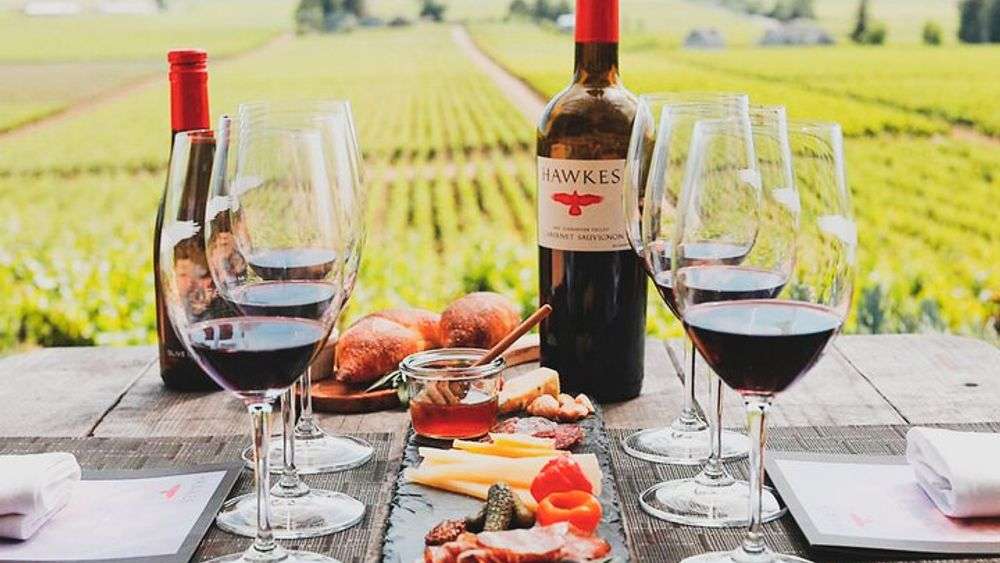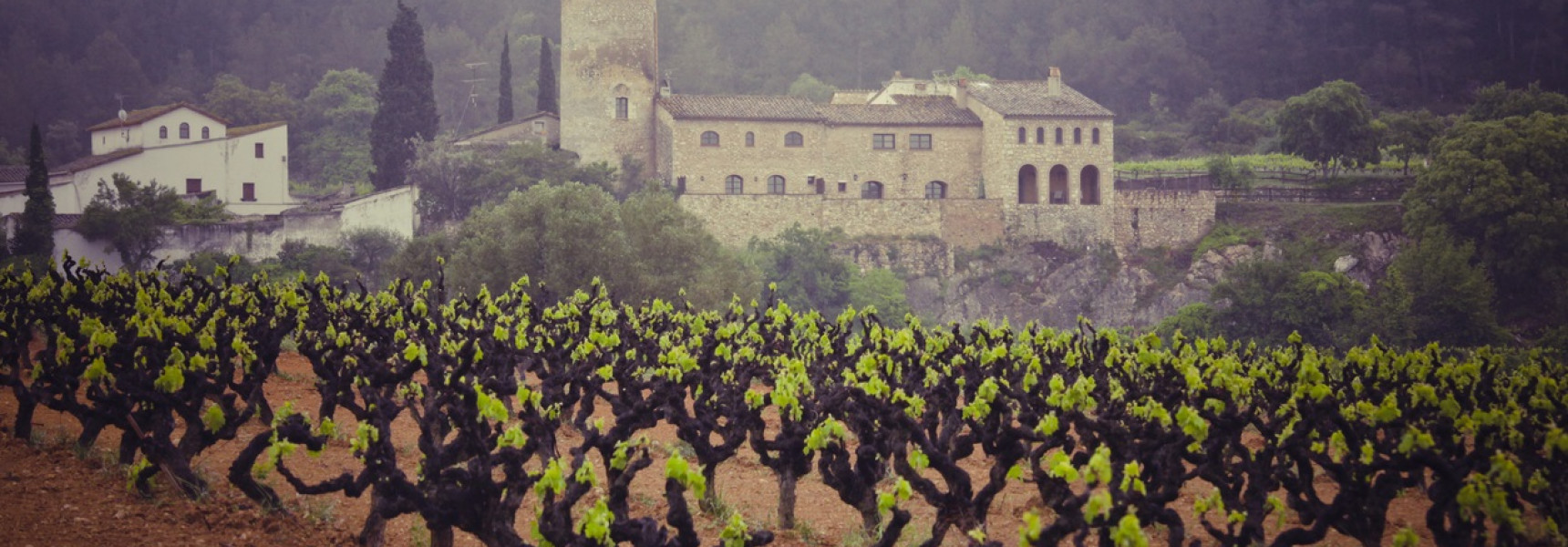Wine Tours
Barcelona
Published: 22 Oct 2024
Barcelona, a city renowned for its vibrant culture, stunning architecture, and picturesque beaches, is also a hidden gem in the world of wine. While many may associate Spain with the famous Rioja and Ribera del Duero regions, Barcelona boasts a rich and diverse wine scene that reflects the city's history, climate, and culinary traditions. From the ancient vineyards of the Penedès region to the trendy wine bars in the Gothic Quarter, Barcelona offers a unique oenological journey that is both historical and contemporary.
A Historical Perspective
The history of winemaking in the Barcelona region dates back to Roman times. The ancient Romans recognized the fertile lands and favourable climate of Catalonia, establishing vineyards that would lay the foundation for centuries of winemaking tradition. Archaeological finds, including wine amphorae and presses, provide evidence of a thriving wine culture that was integral to the local economy and social life.
During the Middle Ages, monastic orders played a crucial role in the preservation and development of viticulture. Monasteries such as those in Sant Pere de Rodes and Poblet cultivated vineyards and refined winemaking techniques. The Cistercian monks, in particular, were instrumental in introducing grape varieties and methods that would become the cornerstone of Catalan wine.
The phylloxera plague of the late 19th century devastated European vineyards, but it also led to a period of renewal and innovation in Catalonia. Winemakers replanted vineyards with resistant rootstocks and embraced modern techniques, propelling the region into a new era of quality and diversity.

Urban Wine Adventures in Barcelona
Back in the city, Barcelona's wine scene is a delightful blend of tradition and modernity. The Gothic Quarter, with its labyrinthine streets and historic charm, is dotted with wine bars and cellars that offer a taste of Catalonia's finest. El Xampanyet, a beloved establishment near the Picasso Museum, is famous for its Cava and traditional tapas. Here, locals and tourists alike gather to enjoy a glass of sparkling wine alongside plates of jamón ibérico, anchovies, and Manchego cheese.
For those seeking a more contemporary experience, the neighbourhood of El Born is a hub of chic wine bars and modern eateries. Bar Brutal, for instance, is known for its extensive selection of natural wines. These wines, made with minimal intervention, offer a different perspective on winemaking, emphasising the purity of the grapes and the character of the vineyard.
No exploration of Barcelona's wine scene would be complete without a visit to a local bodega. Bodegas Maestrazgo, located in the heart of El Born, is a family-run wine shop and tasting room that has been serving the community since 1952. Here, visitors can sample a curated selection of wines from across Catalonia and beyond, guided by knowledgeable staff who share their passion for oenology.
Ready to sip your way through Barcelona? Explore our top wine tours and discover the rich flavours and history behind every glass!
Barcelona's Famous Cava
Barcelona and the surrounding Penedès region are synonymous with Cava, Spain's answer to Champagne. This sparkling wine, known for its vibrant bubbles and crisp flavours, is an integral part of Catalonia's winemaking heritage and holds a significant place in both the history and culture of the region.
The Birth of Cava
The origins of Cava can be traced back to the 19th century, a period of great innovation and transformation in Catalan winemaking. In 1872, Josep Raventós of Codorníu, one of the oldest wineries in Spain, produced the first bottles of Cava using the traditional method (méthode champenoise) employed in the Champagne region of France. This method involves a second fermentation in the bottle, which creates the wine's characteristic effervescence.
Raventós' inspiration came from his travels in France, where he studied the techniques used by Champagne producers. Upon his return to Catalonia, he applied these methods to the native grape varieties of Penedès—Macabeo, Xarel·lo, and Parellada—creating a sparkling wine that was distinctly Catalan. The success of Raventós' Cava set the stage for a burgeoning industry, with other producers such as Freixenet soon joining the ranks.

Historical Significance
Cava's development had profound implications for the region's economy and international reputation. The late 19th and early 20th centuries were a time of significant economic growth in Catalonia, and the wine industry played a crucial role in this prosperity. Cava, with its growing popularity both domestically and internationally, became a symbol of Catalan pride and innovation.
The phylloxera plague that devastated European vineyards in the late 1800s also had a pivotal impact on Cava production. While the plague initially brought ruin to many vineyards, it also led to a period of regeneration. Catalan winemakers replanted their vineyards with phylloxera-resistant rootstocks and modernised their production techniques. This resilience and adaptability helped the Cava industry to thrive in the long term.
During the 20th century, Cava gained further recognition and expanded its market presence. The designation of "Cava" as a Denominación de Origen (DO) in 1972 solidified its status as a distinct product with specific geographic and production criteria. Today, Cava is celebrated worldwide, known for its quality and versatility.
Uncover the best of Barcelona’s wine culture! Book your unforgettable wine tour experience today.
The Cava Production Process
Cava's unique character is the result of a meticulous production process that emphasises quality and tradition. The journey begins in the vineyards of Penedès, where the region's climate and soil provide ideal conditions for growing the primary grape varieties used in Cava production: Macabeo, Xarel·lo, and Parellada. These grapes contribute to Cava's balanced flavour profile, combining freshness, acidity, and complexity.
After the initial fermentation, the wine undergoes a second fermentation in the bottle, a process that takes place in the cool, dark cellars of Cava producers. This secondary fermentation is where the magic happens, as the wine develops its effervescence and distinctive characteristics. The bottles are aged on their lees (spent yeast cells) for a minimum of nine months, although many premium Cavas are aged for significantly longer, enhancing their depth and complexity.
The final steps of riddling (rotating the bottles to collect the sediment) and disgorging (removing the sediment) are carried out with precision, ensuring that each bottle of Cava is clear and pristine. The addition of a dosage (a mixture of wine and sugar) determines the wine's final sweetness level, ranging from brut nature (very dry) to semi-seco (slightly sweet).
Cava and Catalan Culture
Cava is more than just a sparkling wine; it is an integral part of Catalan culture and celebration. It is the drink of choice for toasts at weddings, festive gatherings, and significant milestones. The annual Cavatast festival in Sant Sadurní d'Anoia, the heart of Cava country, is a testament to the wine's cultural significance, drawing thousands of visitors to celebrate and sample the finest Cavas.
In Barcelona, Cava is enjoyed in a variety of settings, from traditional bodegas and tapas bars to modern wine lounges. El Xampanyet, a historic wine bar in the Born district, is renowned for its lively atmosphere and excellent Cava selection, offering a taste of tradition in the heart of the city.
Cava's journey from the vineyards of Penedès to the glasses of wine enthusiasts around the world is a story of innovation, resilience, and cultural pride. Its sparkling bubbles encapsulate the essence of Catalonia, a region where history and modernity coexist in harmony. As you raise a glass of Cava in Barcelona, you are not only savouring a delightful wine but also participating in a rich tradition that has been crafted over centuries. Here's to the enduring legacy of Cava—salut!

Wine and Gastronomy
Barcelona's culinary landscape is a perfect complement to its wine offerings. The city's markets, such as La Boqueria and Mercat de Sant Antoni, are treasure troves of fresh produce, artisanal cheeses, and cured meats. These markets provide the ingredients for the city's renowned gastronomy, from traditional dishes like paella and fideuà to avant-garde creations by Michelin-starred chefs.
Wine and food pairings are an integral part of the Barcelona experience. A crisp, citrusy Xarel·lo from Penedès pairs beautifully with seafood dishes, while a robust Priorat red complements hearty Catalan stews. Tapas culture, with its array of small plates, offers endless opportunities for trying different wines and discovering new flavours.
Barcelona's wine scene is a testament to the city's rich history, diverse terroir, and vibrant culture. From ancient vineyards in the Penedès to contemporary wine bars in the Gothic Quarter, the journey through Barcelona's oenological landscape is as varied and exciting as the city itself. Whether you're a seasoned wine enthusiast or a curious traveller, raising a glass in Barcelona is an invitation to savour the essence of Catalonia and its timeless tradition of winemaking. So, here's a toast to Barcelona—salut i força al canut!
Keep Exploring
Find more amazing tabl. experiences to visit.




